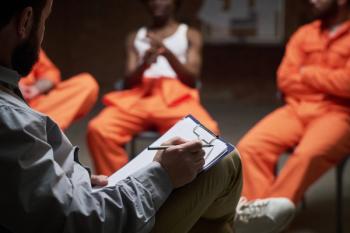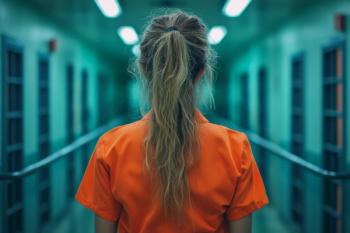
Revisiting Lodz, Poland, in 2011 and Reconstructing How My Parents Survived the Shoah (1939-1945)
I was 9 years old in December 1959 when I left and 60 in July 2011 when I returned to Lodz, Poland. My return-a journey through time as well as space-was a continuation of a trip from my home in Cambridge, Massachusetts, where I teach and practice clinical and forensic psychiatry, to Berlin, where I gave a number of presentations at a conference of the International Academy of Law and Mental Health (IALMH).
I was 9 years old in December 1959 when I left and 60 in July 2011 when I returned to Lodz, Poland. My return-a journey through time as well as space-was a continuation of a trip from my home in Cambridge, Massachusetts, where I teach and practice clinical and forensic psychiatry, to Berlin, where I gave a number of presentations at a conference of the International Academy of Law and Mental Health (IALMH).
One presentation included my parents’ experiences with health care in the Lodz ghetto during the Shoah (the Holocaust, 1939-1945). The reception from colleagues at the conference and from the wider Berlin community at an accompanying presentation at the “old new Jewish synagogue” was heartening and somewhat overwhelming. Being so close to where my parents had survived, and where I was born, meant wanting to experience and learn more, even with the attendant pain.
There was also the opportunity to contribute to public education, as my friend, the distinguished television documentary producer Anthony Geffen of Atlantic Productions, had generously offered to send along a cameraman to record my journey. All in all, my desire to return to Lodz felt stronger then ever, and the accompanying fears I felt were worth facing, as I embarked the train in Berlin heading for Poland.
Some of what I learned on my visit, along with its value for psychiatrists and the people we treat, is described in the interview which you will see. In a context of painful history, it is a story of empathy and trust, adaptation and resilience-qualities we seek to engage as we help people who may feel helpless against long odds recover the capacity to love and work.
This introduction to the filmed interview began with some notes I wrote during a brief stay in Rome after my visit.
I began writing this from the studio of the artist Massimo Campigli in Roma. (My cousin Riki has been living with Campigli’s son for some 24 years.) The previous night we went across to the Borghesa Gardens to the Casa del Cinema to see Kenneth Branagh’s Love's Labor’s Lost; Shakespeare updated to the eve of World War II. At the conclusion, the sadness this beloved comedy evoked was palpable.
My father, Abraham, and Riki’s father, Chaim, were only 4 years apart and the closest of friends growing up in Lodz. When the liquidation order came to the Lodz ghetto in 1944, Chaim felt he had to get on the train with his parents and sisters to accompany them to the promised work camps, which were actually death camps. Since my father was single, his parents had died, and his siblings were all married, he stayed with the resistance.
Each man thought the other had been murdered during the war. More than 50 years later, my cousin Fay-a genial family genealogist-first discovered me and our branch and then Chaim and his branch. By then my father and Chaim were too frail to travel across the Atlantic, so first my younger sister and then I went to meet Chaim in Israel; and Chaim’s children came to the U.S. to meet my father.
Soon after the Lodz ghetto was established, my father was condemned to a work detail on a sanitation crew called the Fekalists, which meant near-certain death. This assignment was punishment for his refusal to join the Jewish Police of the ghetto, which was under the control of the Nazi commandant, Hans Biebow, and his Jewish puppet, Chaim Rumkowski. Soon, however, the Fekalists became a center of the historically overlooked Lodz ghetto resistance. The story of how my father’s life in the resistance was saved by his encounters with physicians can be found in the
My parents fell in love in the Lodz ghetto during the war. Recognizing Miriam Bryks as a child he had seen at his lumber yard a dozen years earlier, Abraham was able to save her life by taking her off a train at the Lodz ghetto station destined for Auschwitz. His pretext to the German soldier guarding the train was that she was an essential member of the sanitation work crew, a Fekalist, needed to help control the spread of infectious diseases. It was a dramatic demonstration of how trust can be essential to life and survival in the worst of circumstances. My mother, whose family had always trusted my father’s family in business dealings, had to trust his assurance that she would be safer getting off the train than staying on. At the same time, he had to trust her not to reveal his ruse to the Germans, who likely would then have killed him on the spot or thrown him onto the train.
Abraham and Miriam’s love story deepened during the resistance, and their love and mutual trust proved to have survival value in a time of horror and mortal danger. In August 1944, when the Lodz ghetto was being liquidated, the Germans had issued an order forbidding Jews to marry. My mother told my father she would not join him in hiding in the bunker they and their fellow resistance fighters had built as she could not, given her love for him, see herself spending time with such an attractive man without sleeping with him. His solution was to propose marriage. She agreed. And just before their descent into the bunker, the resistance group arranged a secret marriage, Chupah (bridal canopy) and all.
My mother more than proved her value to the resistance. She was the one who insisted on volunteering to find out whether, on January 19, 1945, it actually was a Russian tank commander shouting for any remaining Jews to leave the area (which the retreating Germans had dynamited) or whether it was a German masquerading to set a trap. Six hours after my mother’s mission was completed, and the surviving members of the resistance hidden in the sewer bunker had evacuated, the area did blow up.
Today 8 Kosnielna Square the building on the grand church square in which the Bursztajn family lived is, as is the square, but a shadow of its bustling, vibrant former self and the lumber yard which extended behind it is but an empty, barren lot. As Lady Macbeth said: “What is done cannot be undone”, to which we may add, but it can be remembered.
On my first day in Lodz, in the afternoon an awesome thunderstorm struck and I learned why the Baluty-a section of the Lodz ghetto where my parents’ homes had been-was called a bog, and why the “Fekalists” during WWII were so essential to preventing sewage from contaminating drinking water and creating a typhoid epidemic. My parents had been assigned to clean the sewers during the Nazi occupation; thus, they were among the last of the Jews in the Lodz ghetto to be slated for liquidation and had the foresight, together with a dozen other resistance members, to prepare an underground bunker cemented over a river bed, the Brucke, (the Brook), which had become a sewer at the border of the no-man’s-land created by the Nazis to isolate the Lodz ghetto. When the Russian army liberated Lodz in January 1945, out of the more than 200,000 people who had been imprisoned in the Lodz ghetto, only 877 remained.
I am not fully aware of all of my thoughts and feelings as I write these lines on January 19, 2012, the sixty-seventh anniversary of the liberation of the Lodz ghetto. What is clear to me is that Freud’s aphorism that human beings are capable of both far better and far worse than we can imagine remains a deep truth ever to be rediscovered again and again.
As a clinician and forensic psychiatrist I find it helpful to remember that love can catalyze the creativity needed to work for survival even in the midst of great helplessness, hopelessness, uncertainty, danger, and suffering. This journey also served as a reminder that to know ourselves we need to be comfortable learning deeply our family histories, and that, for us as clinicians, one way of helping our patients know themselves is to help them become more comfortable learning about their family histories in all their complexity, including loves and fears, joys and tragedies, gains and losses.
Ciao from Roma & Cheers from Cambridge.
The photographs that appear in this video belong to the collection of the Yad Vashem Photo Archive. The color photographs were taken in the Lodz ghetto by a German photographer. The Yad Vashem web site notes that "In 1987, someone rumaging in a second hand bookstore in Vienna came across a set of about 400 color slides. Upon examination, they turned out to be images of the Lodz ghetto, taken by Walter Genewein, the Nazis' chief accountant. After Genewein died, his companion sold the pictures to the bookstore in Vienna. From there, they made their way into the collection of the Jewish Museum in Frankfurt, and also into Jablonski’s movie ’Photographer.” Genewein must have had his reasons for selecting one view over another and for carefully numbering the images, as if to create a sequence. (Copyright © 2012 Yad Vashem The Holocaust Martyrs' and Heroes' Remembrance Authority)
More information is available on the
Newsletter
Receive trusted psychiatric news, expert analysis, and clinical insights — subscribe today to support your practice and your patients.




